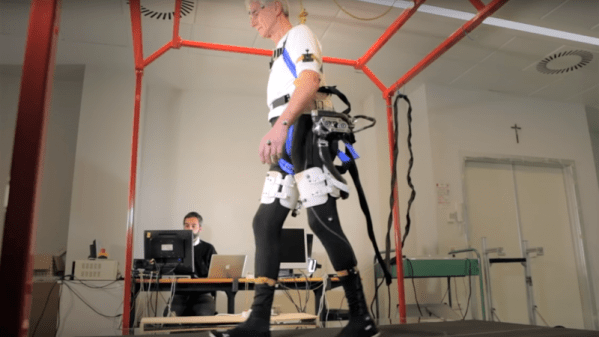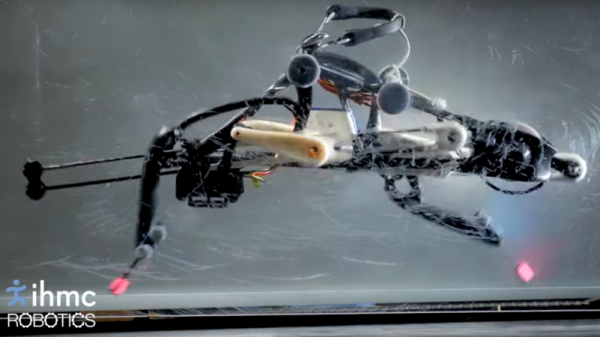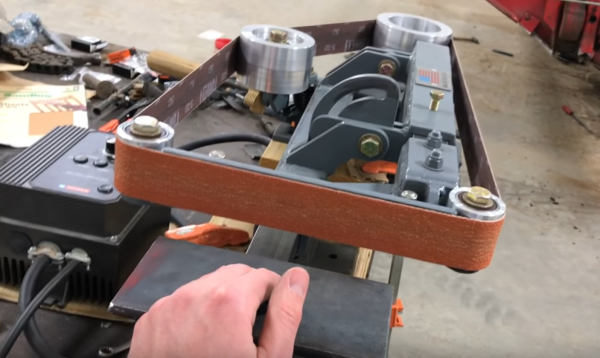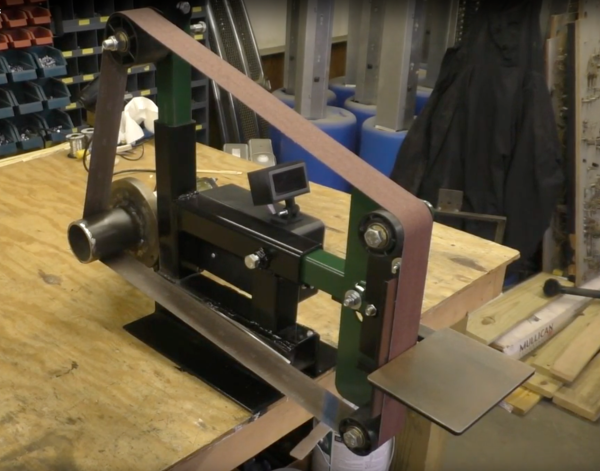When we think of exoskeletons, we tend to think along comic book lines: mechanical suits bestowing superhero strength upon the villain. But perhaps more practical uses for exoskeletons exists: restoring the ability to walk, for instance, or as in the case of these exoskeleton shorts, preventing hip fractures by detecting and correcting falls before they happen.
Falls and the debilitating injuries that can result are a cruel fact of life for the elderly, and anything that can potentially mitigate them could be a huge boon to public health. Falls often boil down to loss of balance from slipping, whether it be a loose rug, a patch of ice, or even the proverbial banana peel. The “Active Pelvic Orthosis” developed by [Vito Monaco] and colleagues seeks to sense slips and correct them by applying the correct torque to the hip joints. Looking a little bulky in their prototype form and still tethered to an external computer, the shorts have motors with harmonic drives and angle sensors for each hip, plus accelerometers to detect the kinematic signature of a slip. The researchers discovered that forcing the leg that slipped forward while driving the stable leg back helped reduce the possibility of a fall. The video below shows the shorts in action preventing falls on a slip-inducing treadmill.
At the Hackaday Unconference in Pasadena, we heard from [Raul Ocampo] on his idea for autonomous robots to catch falling seniors. Perhaps wearing the robot will end up being a better idea.
Continue reading “Exoskeleton Aims To Prevent Falls For Seniors”



 A single motor runs the entire drive chain using linkages that will look familiar to anyone who has taken an elliptical trainer apart, and there’s not a computer or sensor on board. The PER keeps its balance by what the team calls “reactive resilience”: torsion springs between the drive sprocket and cranks automatically modulate the power to both the landing leg and the swing leg to confer stability during a run. The video below shows this well if you single-frame it starting at 2:03; note the variable angles of the crank arms as the robot works through its stride.
A single motor runs the entire drive chain using linkages that will look familiar to anyone who has taken an elliptical trainer apart, and there’s not a computer or sensor on board. The PER keeps its balance by what the team calls “reactive resilience”: torsion springs between the drive sprocket and cranks automatically modulate the power to both the landing leg and the swing leg to confer stability during a run. The video below shows this well if you single-frame it starting at 2:03; note the variable angles of the crank arms as the robot works through its stride.















